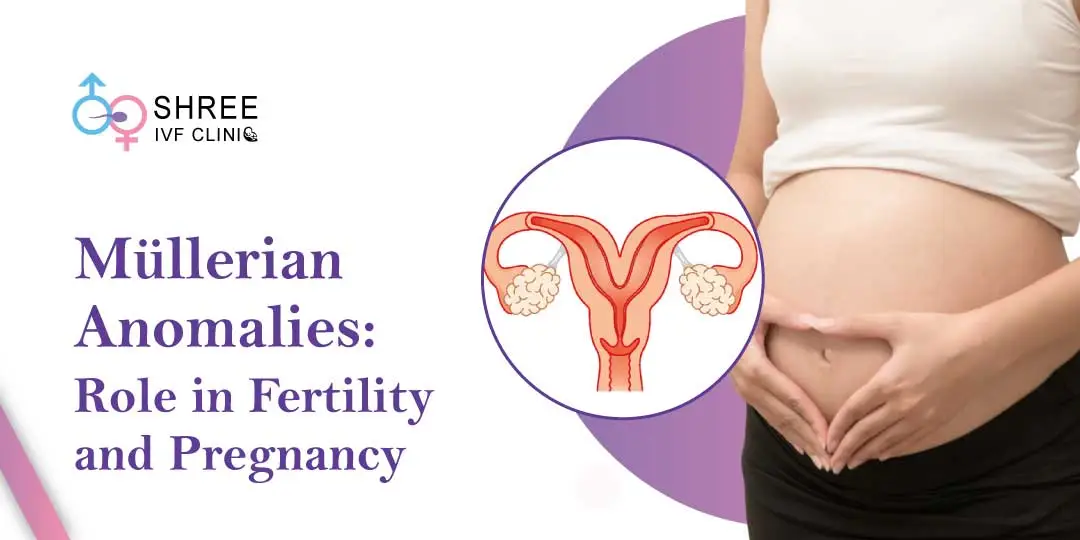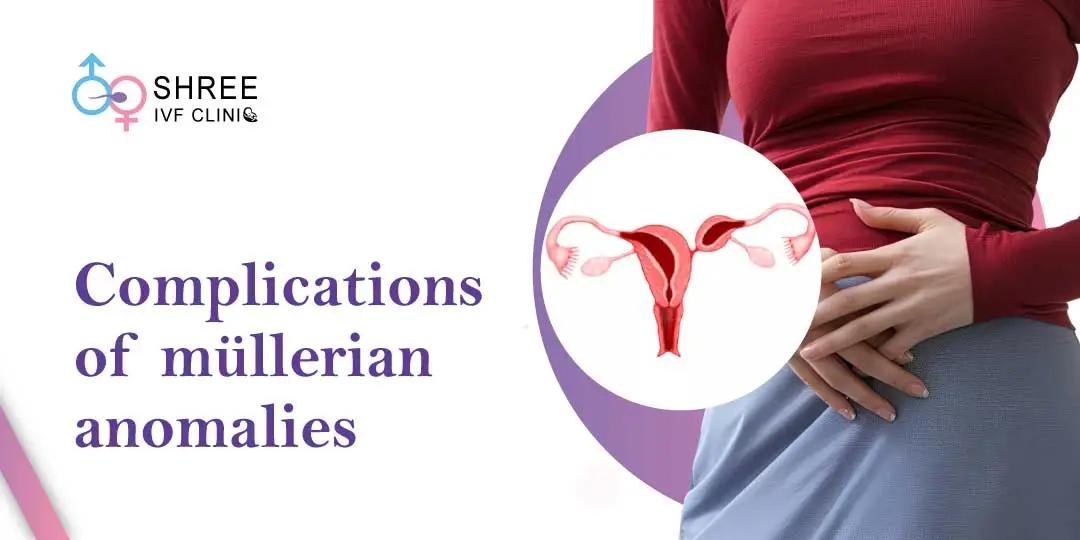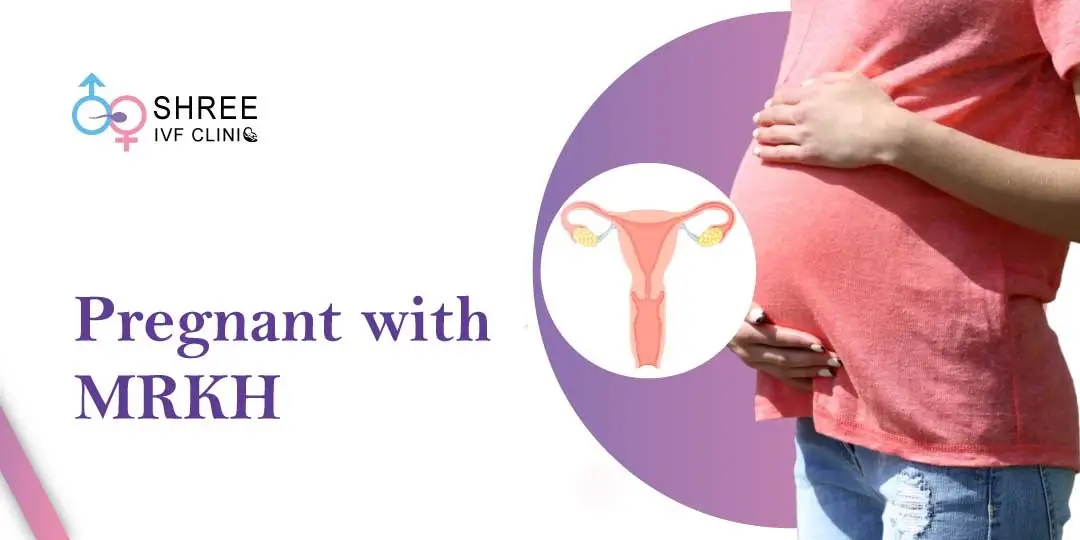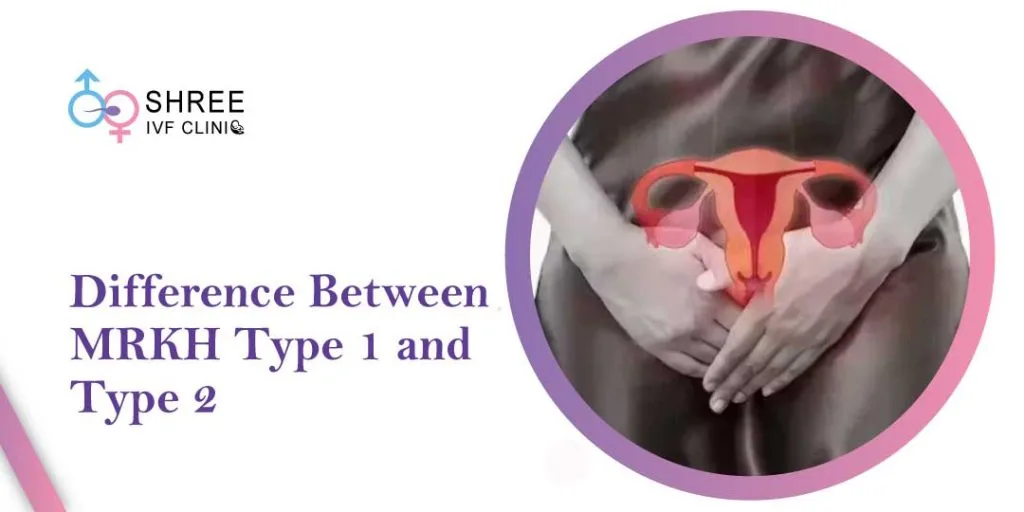Understanding Müllerian Duct Anomalies and Their Impact on Fertility and Pregnancy
UPDATED ON 22TH MAR. 2024
Problems with the female reproductive system can occur due to Müllerian duct anomalies (MDAs), present from birth and result from abnormalities in the development of the Müllerian ducts before birth.
These tubes are early forms of important reproductive structures, and their development and joining together are essential for the creation of the uterus, fallopian tubes, cervix, and the upper part of the vagina.
Differences in the development process can lead to a range of anomalies, from a double uterus to more severe malformations, each affecting a woman’s reproductive health, fertility, and pregnancy outcomes.
Exploring the intricacies of Müllerian duct development and the possible anomalies lays the groundwork for identifying and addressing reproductive issues that may arise.

AUTHOR
Dr Jay Mehta
Scientific Director & IVF Specialist with 10+ years of experience
CONDITION
GET IN TOUCH ON
Types of Müllerian Duct Anomalies
Recognising and managing common types of anomalies can help navigate challenges in reproductive function caused by Müllerian duct anomalies (MDAs). Here are the primary categories:
- Unicornuate Uterus: This condition occurs due to the incomplete development of one Müllerian duct, resulting in a uterus with a single horn. It could potentially be linked to a single fallopian tube and have a notable effect on fertility and pregnancy results, increasing the risk of miscarriages and preterm births for women.
- Bicornuate Uterus: With a uterus that has two distinct horns forming a heart shape, this condition happens when the Müllerian ducts partially merge. Even though individuals with a bicornuate uterus can successfully maintain a pregnancy, they face higher chances of experiencing miscarriage and delivering prematurely.
- Septate Uterus: A fibrous or muscular septum divides the uterine cavity, partially (subseptate) or completely (complete septate). It’s a frequently encountered medical condition linked to a significant rate of reproductive loss, yet surgical elimination of the septum can frequently enhance outcomes.
It is crucial to recognise that the presence of MDAs necessitates thorough assessment and a personalised strategy for enhancing reproductive results.
Challenges in Fertility Related to Müllerian Duct Anomalies
MDAs have a significant impact on fertility, frequently leading to challenges in conceiving and a higher likelihood of infertility.
Issues with the structure of the uterus can impact the embryo’s implantation and growth due to disruptions in normal uterine function.
Anatomical irregularities may result in reduced blood circulation and endometrial readiness, essential for a healthy pregnancy.
At times, abnormalities could block the sperm’s path or disrupt the fertilised egg’s usual route to the uterus for implantation. Patients and doctors must grasp these possible complications to create thorough treatment strategies to reduce fertility issues.
Issues during Pregnancy Due to Müllerian Duct Anomalies
Issues related to Müllerian Duct Anomalies (MDAs) during pregnancy have a notable effect on the health of both the mother and the baby. Women with MDAs have a higher likelihood of experiencing miscarriage, particularly in the second trimester, because of irregular uterine shapes that may not provide sufficient support for the developing pregnancy. The level of risk can differ based on the specific anomaly and its severity, but it tends to be higher than the average population.
Furthermore, there is an increased chance of preterm delivery with MDAs, usually due to restricted space in an abnormally shaped uterus, resulting in the inability to support a developing foetus until full term. This may lead to preterm contractions and eventual early delivery.
Various factors can affect foetal development, such as limited uterine space, resulting in congenital issues, growth restrictions, and impact delivery methods. It may be necessary to provide ongoing developmental monitoring for infants born to mothers with MDAs to address any growth and developmental issues promptly.
Exploring Diagnostic Methods: Utilising Imaging Techniques to Identify Müllerian Duct Anomalies
Early detection of Müllerian Duct Anomalies is crucial for fertility planning, with medical imaging playing a key role in identifying these conditions.
- Ultrasonography is the first screening method because it is non-invasive and widely accessible. It can offer an initial evaluation of the uterine structure and is useful in detecting major abnormalities.
- Magnetic Resonance Imaging (MRI) is considered the best option for more precise imaging. MRI provides excellent soft-tissue contrast and the ability to view the uterine anatomy and surrounding structures from multiple angles. The high level of accuracy makes it easier to classify MDAs precisely, which is essential for planning the right management strategies. Examining the inside of the uterus and the condition of the fallopian tubes is crucial for fertility assessments, making Hysterosalpingography (HSG) a key diagnostic tool. Nevertheless, it’s important to consider the procedure’s invasiveness and exposure to ionizing radiation.
- Hysteroscopy and Laparoscopy offer a direct view of the uterine cavity and external structure of the uterus. They are used when surgery is considered or additional investigation is needed after non-invasive imaging.
Recognising the nature and severity of an MDA in its initial stages can help in making choices regarding fertility treatments and managing pregnancy, which may reduce risks and enhance results.

4,790+
379K+
” Every individual and couple’s journey is unique, and
finding the right solutions tailored to their specific
circumstances can make all the difference “
Exploring Different Treatment Choices
Addressing Mullerian Duct Anomalies (MDAs) requires a comprehensive strategy customised to the person’s unique situation and fertility goals.
Treatment options may involve hormonal therapies to help regulate menstrual cycles or address symptoms like dysmenorrhea commonly linked to these conditions.
Medical procedures like metroplasty may be necessary to correct specific anatomical issues and improve the chances of a successful pregnancy. The surgical procedure selected is based on the specific type of MDA and whether the patient is experiencing symptoms or reproductive difficulties.
For those dealing with infertility, Assisted Reproductive Technologies (ART) like In Vitro Fertilisation (IVF) could be an option. ART can be a good choice, especially when anatomical corrections are not possible or successful. Preimplantation genetic testing is an important factor to consider with ART to increase the likelihood of a healthy pregnancy.
Every treatment option needs to be carefully evaluated for its advantages and disadvantages, and it’s crucial to consult a reproductive health specialist to ensure the best results.
For comprehensive treatment of müllerian anomalies in Mumbai, Shree IVF & Endometriosis Clinic offers expert care. Reach out at +91-9920914115 or request an appointment to review your treatment options.
Success Rates and Factors to Consider
However, research indicates that surgical procedures such as metroplasty have a high success rate in enhancing reproductive outcomes.
However, the success of Assisted Reproductive Technologies (ART) may be impacted by the specific medical condition and the viability of the eggs and sperm.
Thus, it is recommended for couples to have comprehensive health evaluations and genetic counselling before moving forward with IVF procedures.
Every MDA situation necessitates an individualised strategy and should involve a comprehensive conversation with a fertility expert to address expectations and grasp the likelihood of success. The patient needs to understand that even with improvements in treatment, certain medical conditions may still present obstacles to having a successful pregnancy.
Antenatal Care and Childbirth Special Considerations
When dealing with Mullerian Duct Anomalies (MDAs), it’s crucial to focus on specialised prenatal care and delivery methods for pregnant women. Special factors to take into account are:
- Intensive Observation: Regular monitoring is crucial because of the increased likelihood of complications like preterm labour, miscarriage, or cervical insufficiency. This may require more frequent ultrasounds and clinical examinations to monitor the baby’s growth and the mother’s physical structures that may affect the pregnancy.
- Addressing Potential Issues: Structural complications such as uterine didelphys or bicornuate uterus may result in abnormal foetal positions or growth restriction. Dealing with such concerns demands proactive management strategies customised to the person’s specific MDA type to predict and address potential risks.
- Effect on Delivery Methods: The delivery method may need to be modified based on the particular issue and any potential pregnancy complications. Some women with medical conditions may need to plan for a caesarean section (C-section) to ensure the safest outcome for both mother and child.
Every situation needs to be handled uniquely, with a team of experts working together to address the complexities of pregnancy and childbirth linked to MDAs.
When dealing with pregnancies affected by Mullerian Duct Anomalies, a personalised care strategy developed by a diverse team of experts is crucial. The main goal is ensuring a safe pregnancy journey and delivery for both the mother and infant.
Dealing with MDAs can be quite challenging, but with progress in medical knowledge and a deep understanding of these conditions, there is hope for favourable results.
Obstetricians and maternal-fetal medicine experts need to keep pushing for research and improving practices to provide the best care for women with MDAs so that every woman can have a positive experience during pregnancy and childbirth.
AUTHOR
Dr Jay Mehta
Scientific Director & IVF Specialist with 10+ years of experience
CONDITION
CALL US 24/7 FOR ANY HELP
GET IN TOUCH ON
Share Article on
Recommended Reading
Are Mullerian Anomalies a Problem For Infertility?
Uncover how Müllerian anomalies affect fertility in our in-depth blog. From diagnosis to treatment, learn actionable insights for informed decisions on your reproductive health journey.
Can You Get Pregnant with MRKH?
Curious about pregnancy with MRKH syndrome? Discover fertility options and treatment insights in our comprehensive blog. Learn about the impact of MRKH on conception, diagnostic methods, and the latest reproductive technologies.
What is the difference between MRKH type 1 and type 2?
Distinguish between MRKH Type 1 and Type 2, subtypes of Mayer-Rokitansky-Küster-Hauser syndrome. Explore symptoms, diagnoses, treatments, and the value of multidisciplinary care.




